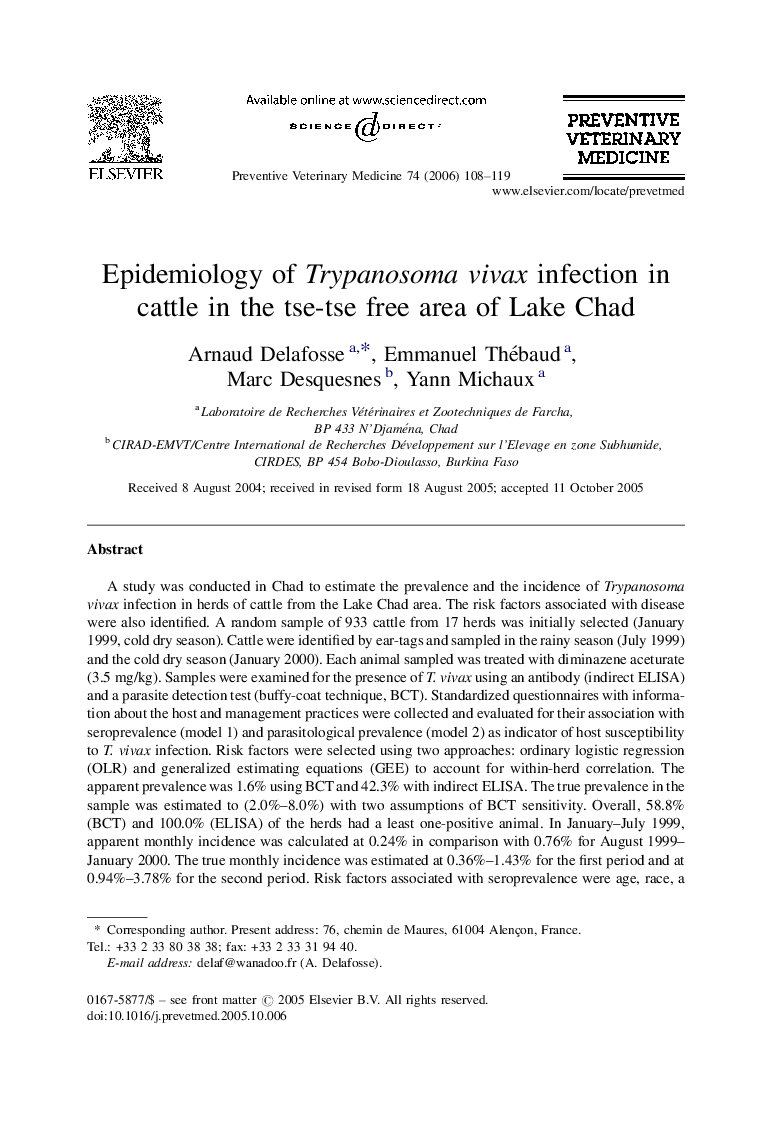| کد مقاله | کد نشریه | سال انتشار | مقاله انگلیسی | نسخه تمام متن |
|---|---|---|---|---|
| 2453585 | 1554234 | 2006 | 12 صفحه PDF | دانلود رایگان |

A study was conducted in Chad to estimate the prevalence and the incidence of Trypanosoma vivax infection in herds of cattle from the Lake Chad area. The risk factors associated with disease were also identified. A random sample of 933 cattle from 17 herds was initially selected (January 1999, cold dry season). Cattle were identified by ear-tags and sampled in the rainy season (July 1999) and the cold dry season (January 2000). Each animal sampled was treated with diminazene aceturate (3.5 mg/kg). Samples were examined for the presence of T. vivax using an antibody (indirect ELISA) and a parasite detection test (buffy-coat technique, BCT). Standardized questionnaires with information about the host and management practices were collected and evaluated for their association with seroprevalence (model 1) and parasitological prevalence (model 2) as indicator of host susceptibility to T. vivax infection. Risk factors were selected using two approaches: ordinary logistic regression (OLR) and generalized estimating equations (GEE) to account for within-herd correlation. The apparent prevalence was 1.6% using BCT and 42.3% with indirect ELISA. The true prevalence in the sample was estimated to (2.0%–8.0%) with two assumptions of BCT sensitivity. Overall, 58.8% (BCT) and 100.0% (ELISA) of the herds had a least one-positive animal. In January–July 1999, apparent monthly incidence was calculated at 0.24% in comparison with 0.76% for August 1999–January 2000. The true monthly incidence was estimated at 0.36%–1.43% for the first period and at 0.94%–3.78% for the second period. Risk factors associated with seroprevalence were age, race, a great number of small ruminants in the herd, and latitude and longitude of pasture area in the rainy season. Risk factors associated with BCT prevalence were duration of seasonal migration and longitude of pasture area in the rainy season.In conclusion, T. vivax is present and widely disseminated in the cattle herds of tse-tse free area of Lake Chad. Farm-level factors, particularly seasonal migration, should be considered as the main risk factors for infection and to host susceptibility to the parasite.
Journal: Preventive Veterinary Medicine - Volume 74, Issues 2–3, 17 May 2006, Pages 108–119